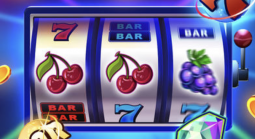Two Ballot Initiatives for Sports Betting in California Filed Friday
Two ballot initiatives to legalize sports betting in California were filed today. The first initiative seeks to amend the CA Constitution to allow tribal-operated retail and online sports betting, and the second seeks to prohibit sports betting by non-tribal operators.
Initiative 23-0030: The Sports Wagering Regulation and Tribal Gaming Protection Act
Initiative 23-0031: The Tribal Gaming Protection Act looks to add the following new language to the California Constitution:
"The Legislature shall not authorize in-person or online sports wagering in California by any person or entity other than a federally recognized Indian tribe, as provided herein."
BREAKING: 2 ballot initiatives to legalize sports betting in California were filed today. The first initiative seeks to amend the CA Constitution to allow tribal-operated retail and online sports betting, and the second seeks to prohibit sports betting by non-tribal operators. pic.twitter.com/bMIVCKLiM2
— Daniel Wallach (@WALLACHLEGAL) October 27, 2023
Gaming attorney Daniel Wallach writes: "The initiative proposes a model compact that would obligate participating tribes to contribute 15% of GGR to a tribal revenue sports wagering revenue sharing trust fund and 10% to a California Homelessness and Mental Health Trust Fund.
"The proponent and author of both proposed initiatives is Ryan Tyler Walz, who does not appear to be aligned with any tribal entity. He could just be the front person. But the measure does look similar to the one filed by San Manuel, Wilton, Graton, and Rincon in 2021."
Both ballot initiatives are proposed for the November 2024 statewide general election, and, if approved, sports betting would not start before Sept. 1, 2025.
Similar double voter initiatives for legalizing sports betting failed miserably before in California.
- Frank Doyle, Gambling911.com















